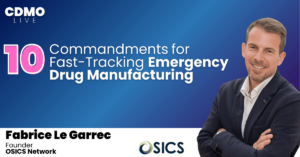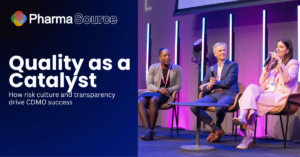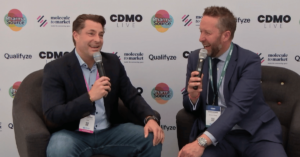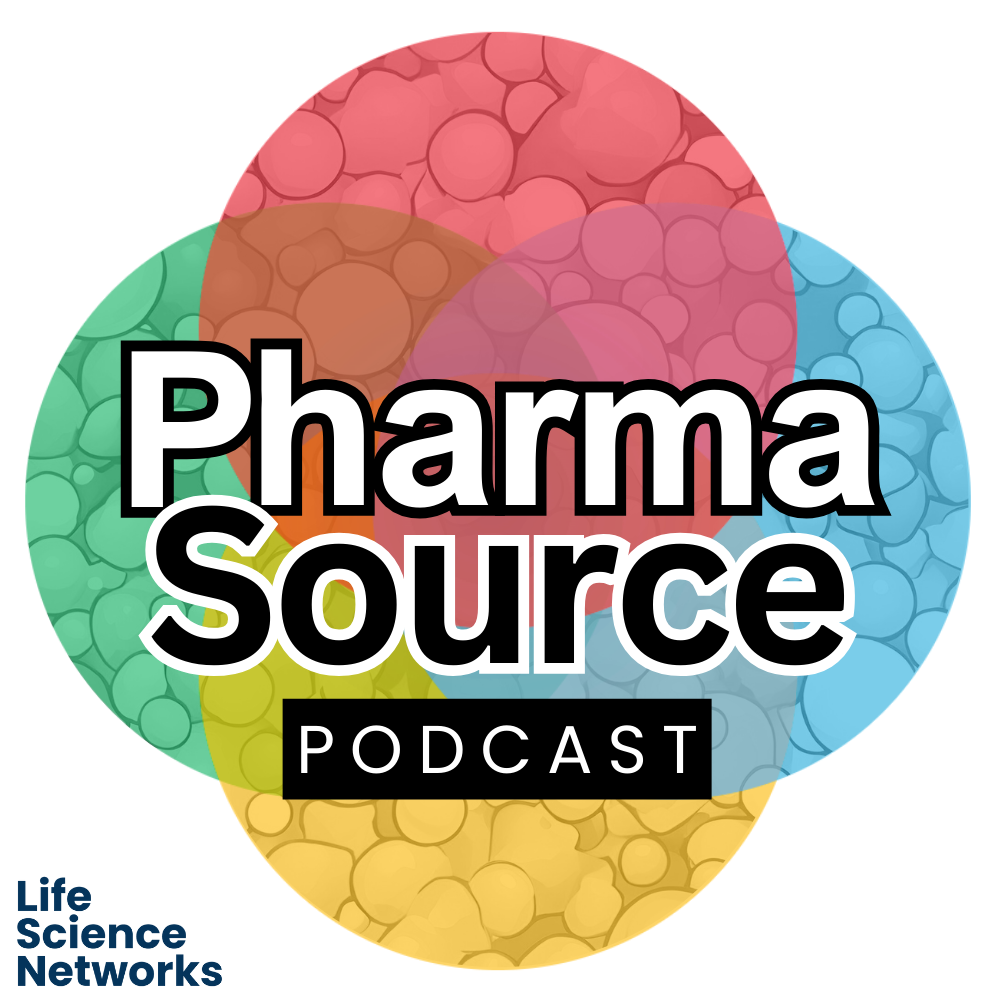“Europe has roughly double the population of the United States but lower pricing, so it’s a balancing act between how much volume can you get and how little price discount you give.” – Joshi Venugopal
Joshi Venugopal, Head of Region Europe for Novartis Gene Therapy & Rare Diseases and Senior Vice President, brings extensive experience spanning R&D, early pipeline development, and in-market commercialisation.
In the latest PharmaSource podcast episode, Joshi shares valuable insights on how to successfully commercialise gene therapies in Europe, including innovative pricing models and critical success factors. His strategic approach offers essential guidance for biotechs and pharmaceutical companies looking to navigate the complex European landscape.
Commit to a Broad European Strategy
The European market represents a massive opportunity for gene therapies, but most companies fail to capture its full potential. The fragmented nature of European healthcare systems requires a deliberate approach to market access planning.
“Europe is not a one-stop shop. It’s very fragmented, and you need to do the pricing and reimbursement process country by country,” Joshi explains. “Most biotechs typically focus on a few European countries – Germany, France, and sometimes Italy, Spain, UK – and that is only half of the European population.”
This limited approach leaves significant value untapped. For companies serious about European success, Joshi recommends investing early in building a comprehensive market access strategy that extends beyond the largest markets:
“US biotechs often prioritise their home market and don’t invest early enough in Europe, leaving money on the table,” Joshi notes.
For companies lacking resources to build their own European infrastructure, strategic partnerships with established pharmaceutical companies may provide a more efficient route to market. These partners often have existing teams with valuable relationships and knowledge of local healthcare ecosystems and pricing dynamics.
Develop Innovative Pricing Models
The high upfront cost of gene therapies presents a significant barrier to European market access. Healthcare systems accustomed to chronic treatment payment models struggle with substantial one-time costs, even when the long-term value proposition is compelling.
“Payers are used to chronic treatments where payments are spread over time. When they face high upfront costs for therapies with multi-year impacts, it creates budgetary challenges,” Joshi explains.
To overcome this challenge, Joshi recommends implementing alternative payment structures:
“One common approach is instalment-based payment models, where payers make a partial upfront payment with the remainder spread over time.”
For therapies with limited long-term data, pay-for-performance models can further reduce payer risk:
“To address uncertainty with small clinical trial datasets, we implement pay-for-performance models where instalments are linked to outcomes. This de-risks it for the payer,” Joshi explains.
These innovative models have enabled Novartis to secure access for their gene therapies even in emerging markets, demonstrating that with the right approach, pricing barriers can be overcome.
Invest in Early Diagnosis and Screening
Perhaps the most crucial factor for gene therapy success is ensuring patients can be identified and treated early enough to benefit from treatment. Companies often focus exclusively on therapy development without sufficient attention to diagnostic pathways.
“Early diagnosis is one of the key challenges for these therapies to show the best results,” Joshi emphasises. “Many gene therapies are indicated for early disease stages. If you miss that window, the patient becomes ineligible.”
He notes that patients with rare diseases often face lengthy diagnostic odysseys: “Patients with rare diseases often circle from doctor to doctor seeking the right diagnosis, as awareness of these conditions is limited within the healthcare system.”
Newborn screening provides a particularly effective solution: “In conditions where newborn screening is available, we see much better results because treatment begins immediately. Early diagnosis is crucial for gene therapies to succeed.”
Joshi’s observation about commercial underperformance is telling: “A common factor among gene therapies that haven’t scaled commercially is that early diagnosis is the missing link.”
Companies developing gene therapies should therefore:
- Partner with diagnostic companies or develop companion diagnostics
- Advocate for inclusion of relevant conditions in newborn screening programmes
- Educate healthcare providers about early disease recognition
- Support patient advocacy groups in raising disease awareness
- Consider whole genome sequencing initiatives where appropriate
Select Disease Targets Strategically
For companies developing gene therapies, choosing the right disease targets significantly impacts commercial potential. Joshi advises initially focusing on severe monogenic diseases affecting non-dividing cells.
“Most gene therapies target severe monogenic diseases in non-dividing cells. When cells divide, the gene therapy effect is diluted because the plasmid doesn’t multiply,” Joshi explains.
Neuromuscular diseases represent a particularly promising area: “Neuromuscular diseases are important targets because neurons don’t divide, the conditions are severe, and many are monogenic.”
For companies seeking larger markets, ophthalmology offers significant advantages:
“Ophthalmology presents a sweet spot because it requires smaller doses, addressing cost concerns. The eye is immune-privileged, reducing safety issues. And conditions like age-related macular degeneration affect larger populations,” Joshi notes.
He explains further practical benefits of ophthalmology targets: “Intraretinal injections limit systemic exposure compared to intravenous administration.”
This strategic targeting approach should guide early pipeline decisions, with consideration for:
- Disease severity and unmet need
- Cell type characteristics (non-dividing preferred)
- Required dosing (lower is better for cost management)
- Target tissue accessibility
- Potential patient population size
- Competitive landscape and existing treatments
Build Capabilities Beyond the Therapy
Successfully bringing gene therapies to European markets requires building capabilities across multiple dimensions. As Joshi notes, “This isn’t just about cost. You need Centres of Excellence and expertise to manage these complex therapies. Capacity and capability building at the provider level is essential.”
For biotechs, this means:
- Establish provider networks: Identify and support specialized treatment centres capable of administering complex gene therapies and managing potential complications
- Develop logistics solutions: Create robust cold chain management systems and tracking platforms to ensure product integrity from manufacturing to administration
- Implement patient support programmes: Provide comprehensive services to help patients navigate the treatment journey, from diagnosis through long-term follow-up
- Create data infrastructure: Build systems for collecting and analyzing real-world evidence to support outcomes-based payment models and demonstrate long-term value
- Engage with regulatory authorities early: Proactively address regulatory concerns and shape evaluation frameworks for novel therapies
Joshi’s advice for biotechs applies here: “Fall in love with the problem, not your solution. Remain emotionally detached enough to assess if your product has a realistic chance of market impact, while staying passionate enough to drive it forward.”
This practical approach requires understanding market realities beyond just having a good product. Joshi illustrates this with the example of inhaled insulin, which failed commercially despite being an innovative product that patients preferred. The issue wasn’t product quality or patient acceptance, but rather that endocrinologists lacked the spirometers needed for FDA-mandated lung function tests.
“Consider how medicine is actually practiced today and whether your product fits into existing workflows,” Joshi advises. “Changing established practices is possible but extremely challenging.”
For resource-constrained companies, strategic partnerships become essential. As Joshi notes: “Most biotechs engage with CDMOs very early, allocating much of their initial funding to manufacturing and testing services.”
He suggests an innovative approach for funding-challenged biotechs: “CDMOs could selectively take stakes in biotech companies as partners. This creates a win-win model for those with long-term vision.”
Understanding the Maturity Curve
Joshi sees the gene therapy field following a classic Gartner hype cycle, with the sector currently beginning to recover from the “trough of disillusionment” phase.

“If you look at the gene therapy space over time, it pretty much follows the Gartner curve. There was a lot of hype early on following the first clinical trials and Human Genome Project, then a sudden loss of faith after safety incidents. The first FDA-approved gene therapy didn’t meet commercial expectations,” Joshi observes.
He believes the sector is now on an upward trajectory, though still recovering: “I think now we are slowly coming back up, but the sentiment is still not anywhere near what it used to be. We are still at the bottom, but coming back up.”
Looking ahead, Joshi predicts a longer-term path to mainstream adoption: “Over the next 10 to 15 years, probably 15 years, we will reach the plateau of productivity driven by changes in diagnosis, technology improvements, and better commercialisation capabilities.”
This long-term perspective is valuable for companies developing gene therapies today, suggesting that patient persistence and strategic investments will be needed to realize the full potential of these transformative treatments.
By implementing these strategic approaches—committing to broad European access, developing innovative pricing models, investing in early diagnosis, selecting targets strategically, building comprehensive capabilities, and maintaining a long-term perspective—companies can significantly improve their chances of successfully commercialising gene therapies across European markets.
Joshi Venugopal is sharing his vision for Cell & Gene Therapy at CDMO Live 2025.












 Stay ahead of trends and best practices
Stay ahead of trends and best practices
